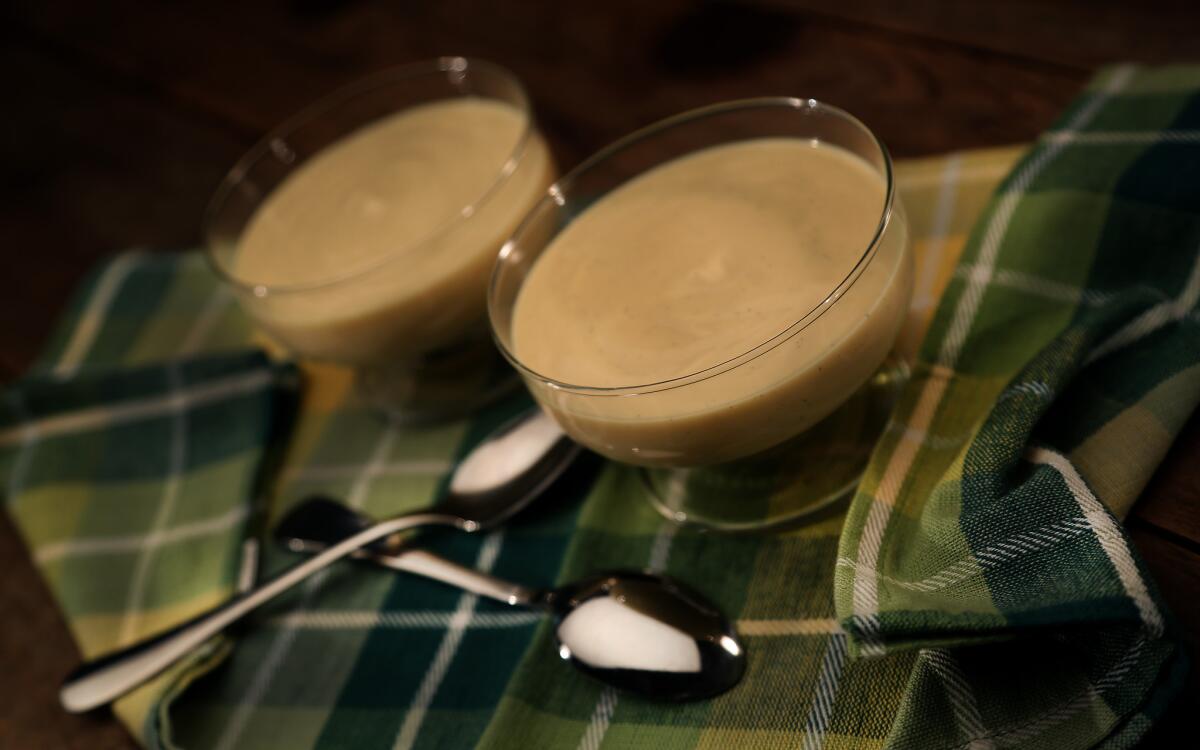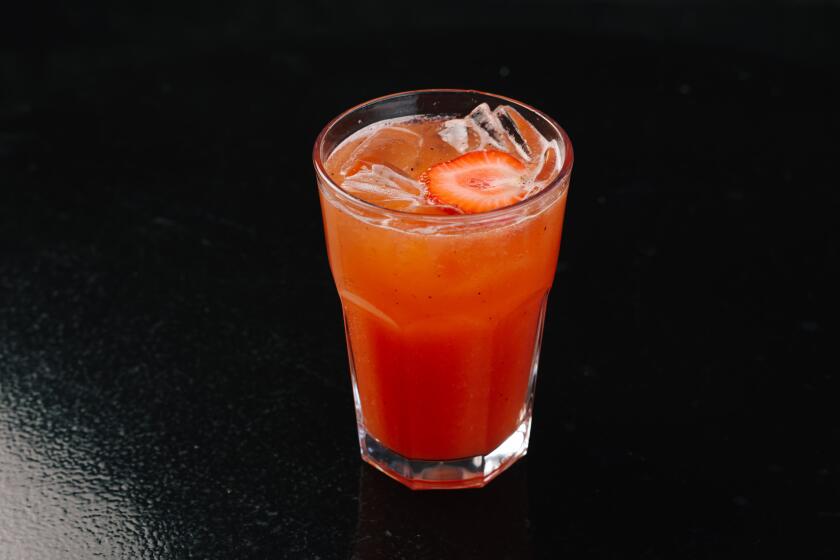Salted maple pudding

- Share via
Growing up, I associated maple flavor with the pancake syrup found at the breakfast table. It was sweet but mostly flavorless. As if its only purpose was to baptize food in a sticky coating of liquid sugar. I wasn’t the biggest fan.
Today it seems maple is everywhere. It flavors ice cream, candy, coffee, tea, barbecue sauce and more. Thirsty? Hydrate yourself with maple water, now hip enough to be touted as the next coconut water.
And maple isn’t just limited to retail products. Go out to eat and you’ll find it added to any number of restaurant dishes. It’s a chef’s Eliza Doolittle.
I now look for any excuse to add the real syrup to a dish, whether simple desserts, such as a salted maple stove-top pudding, or a brine for a basting glaze for slow-smoked turkey or duck. I’ll even sneak it into salads as the sweet component in a vinaigrette. And, yes, pancakes aren’t complete without it.
“Maple syrup is a great alternative sweetener. It’s natural,” says Jon Shook, co-owner with Vinny Dotolo of the restaurants Animal and Son of a Gun. Maple has found a way onto the menus of both places.
The smoked steelhead roe with maple cream and pumpernickel bread at Son of a Gun “has a bit of a cult following,” says Dotolo. Unusual sounding, perhaps, if you haven’t yet tried it. But, Dotolo adds, “it kind of reminds you of bagels and lox. The smokiness, saltiness and sweetness lends itself to a really nice contrast.”
Another cult favorite? The foie gras loco moco at Animal. Its take on the Hawaiian comfort food layers rice, a beef burger, Spam, foie gras and a quail egg bathed in a sweet-spicy sauce punctuated with notes of Sriracha and maple syrup.
“I have a kind of attachment to maple syrup,” says Susan Feniger of Border Grill and Mud Hen Tavern. She says she used to make maple syrup when she was in college in Vermont. Feniger describes collecting the sap and staying up all night, boiling the sap down to a syrup. “It was pretty incredible. I’ve always been a big fan.”
At Feniger’s Mud Hen Tavern, she’s used maple syrup quite a bit over the years. “Kind of from the Street days,” she says. (Feniger transformed Street, her earlier restaurant, into Mud Hen in 2013.). “You’ve got that Southeast Asian sweet-salty thing going on.” Maple infuses a number of dishes, including chicken and waffle croquettes served with a spicy maple sauce and smoked pork belly flavored with an espresso-maple brine.
The restaurant even features a cocktail called the Old Maple, which, though it doesn’t contain any actual maple, combines a mixture of rye whiskey, walnut bitters and agave. “It almost tastes like maple syrup,” Feniger says.
Maple syrup itself is going through a bit of a renaissance. “Maple syrup has such a distinct flavor,” says Shook. “The generation I grew up in, it was Aunt Jemima.”
--
Same syrup, new grades
In late January, the U.S. Department of Agriculture revised its voluntary maple syrup grading standards to match international standards. Because of increased demand for darker syrup for cooking and table use, the new classifications are meant to address producer concerns and customer confusion, and include color and flavor descriptors. Everything sold retail is now considered Grade A with these classifications.
Golden color with delicate taste (formerly Grade A light amber)
Amber color and rich taste (formerly Grade A medium and dark amber)
Dark color and robust taste (formerly Grade A dark amber and Grade B)
Very dark and strong taste (formerly Commercial grade)
Place the butter in a strainer set over a bowl. Place the bowl over a larger bowl of ice water to form an ice bath.
In a heavy saucepan, whisk together the milk, maple syrup, salt and vanilla bean. Cook over medium-high heat, striring frequently, until the mixture comes to a boil, 5 to 7 minutes.
Meanwhile, whisk together the eggs, egg yolks and cornstarch.
Whisk one-half cup of the boiling half-and-half into the egg mixture to temper the eggs, then slowly stir the egg mixture into the hot liquid. Increase the heat to high and cook, whisking constantly (and scraping the sides and bottom of the pan), until the mixture thickens and comes to a boil.
Immediately remove the pan from heat and pour the mixture over the butter in the strainer. Strain the custard, then gently stir until the butter is completely incorporated. This makes about 3 cups custard.
Divide the custard between serving cups or ramekins. Place a sheet of plastic wrap over the surface of each custard to prevent a skin from forming, and set aside until cooled.
Get our Cooking newsletter
Get a taste of Los Angeles — and the world — with recipes and kitchen tricks from the L.A. Times’ Cooking newsletter.
You may occasionally receive promotional content from the Los Angeles Times.
















